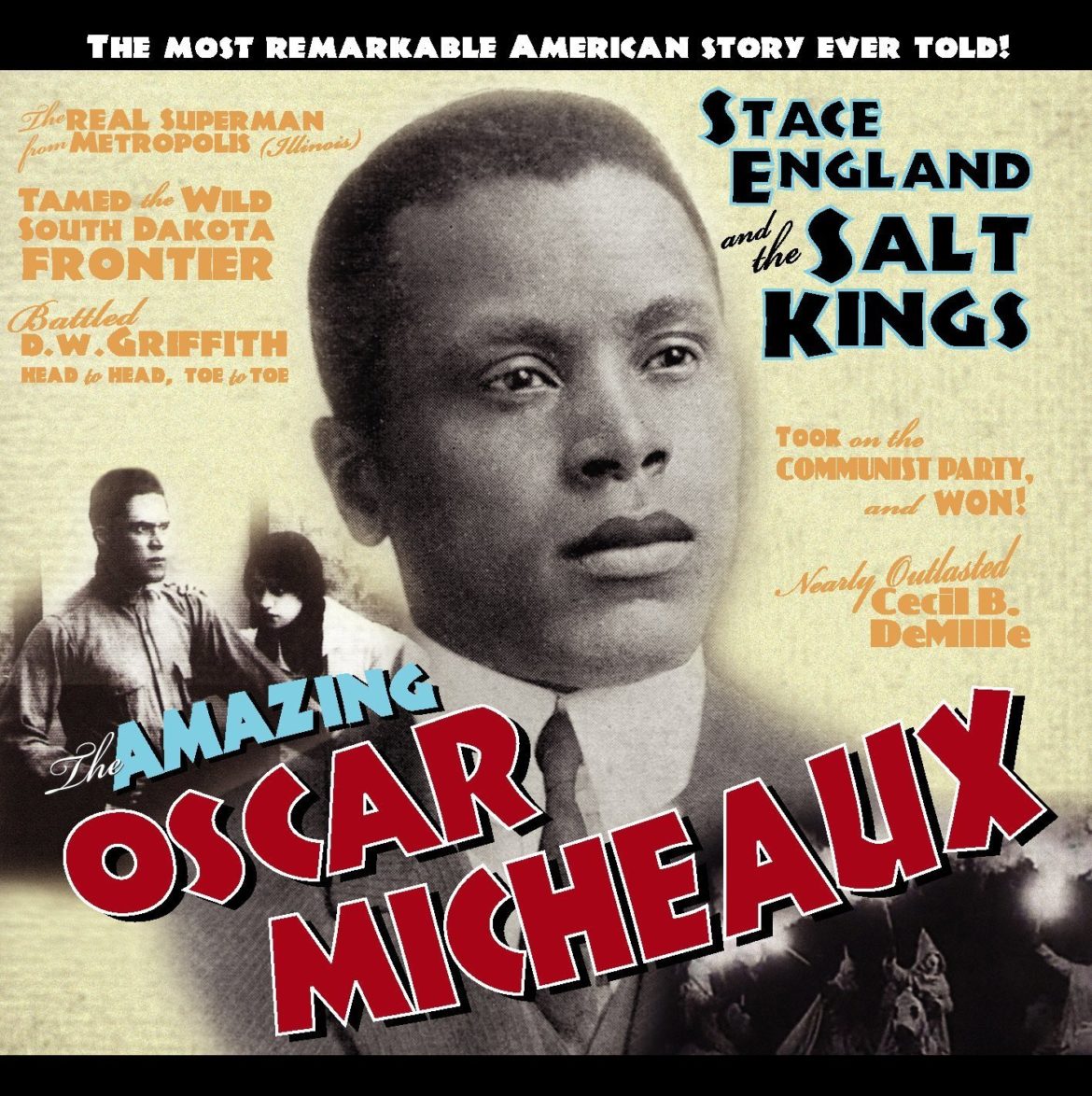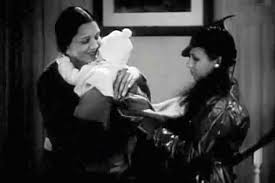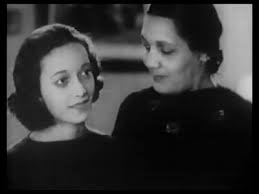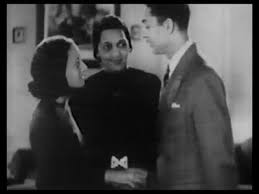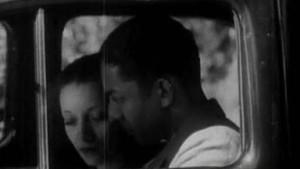Oscar Micheaux – the wildly prolific and successful early 20th century director of “race films” and generally considered to be the first Black filmmaker – courted controversy throughout his career. His depictions of Black middle-class life and values, and his often negative portrayals of some of his characters who did not embody what he saw as the best moral and social hopes for his people (rooted, in part, in an admiration for Booker T. Washington and a focus on social uplift), did not always sit well with other leaders at the time. Or since.
This was never more true than in God’s Step Children (1938), a film that drew actual pickets from the NAACP and others. Watching it today, it’s not hard to see why. Even if the focus on “passing” and the still-shocking statement from its protagonist that “the Negro does not like to think” somehow didn’t draw outrage, the constant theme of incest presumably would have.
We began this series with looks at two other Micheaux films: Within Our Gates and Body and Soul. Both contained similar elements that characterize Micheaux: a pedagogical focus rooted in cultural uplift, a celebration of bourgeois virtue, and, of course, the near-total absence of white characters. These were films by, for, and starring members of the American Black community, imbued with Micheaux’s rather heavy-handed politics.
They were also both silents, unlike God’s Step Children – to the detriment of the latter. The stilted phrasing of the actors skirts self-parody, and, on the whole, the film has a thrown-off kind of feeling. Indeed, Micheaux is said to have favored first-takes and refused re-writes. Still, if the dialog is abysmal and the delivery worse, God’s Step Children remains a fascinating narrative grappling, however clumsily, with big themes, and, as in the earlier two films, plays around with its narrative in interesting ways.
Loosely drawing on themes from 1934’s Imitation of Life (famously, and gorgeously, remade by Douglas Sirk 25 years later), God’s Step Children tells the story of Naomi, a light-skinned girl dropped off as an infant with Mrs. Saunders, a devout neighbor who raises her as her own. The reason for Naomi’s abandonment isn’t spelled out, but it’s safe to infer that her skin tone has something to do with it.
We flash forward to a school-aged Naomi, now a young terror and miscreant. When she’s dropped off at the local school for Black children, she hightails it instead to the one for local whites – even in elementary school, her rejection of her race, and her desire to pass, is clear. Mrs. Saunders might be blind to this, but her other child Jimmy is not, who even declares Naomi should have the notion beaten out of her. As Naomi morphs into a full-fledged antagonist and Jimmy becomes the film’s moral center, it’s not hard to tell where Micheaux’s allegiances lie.
When Naomi is caught maliciously tripping her classmates on the playground and asked to atone for her misdeeds, she literally spits in the teacher’s face, declaring, “I hate you and I hate this school.” Punishments ensue from teacher and foster mother alike, leading Naomi to create rumors intended to get her teacher fired. She’s portrayed as a pretty loathsome little girl – any sympathy for the existentially and racially adrift orphan is more or less absent. Deciding they have no other option, the adults ship her off to a convent school instead, if she’s ever going to make something of herself and tame her nastiness.
The narrative picks up many years later. Adult Jimmy is a handsome, debonair figure, dressed in fashionable suits and sporting a Duke Ellington mustache. He’s engaged to the teacher’s daughter Eva (played, curiously, by Ethel Moses, the same actress who played the teacher – it makes for a confusing moment in the film). Eva is a model of bourgeois femininity and grace, which we know because she plays the piano.
Jimmy is a self-made man, having worked as a Pullman porter, saved scrupulously, and is now set to buy his dream farm. By all available evidence, this represents Micheaux’s, or the film’s, vision of respectability and honest success. When another Black man tries to tempt Jimmy with get-rich quick schemes running rackets, he’s haughtily rejected, leading to Jimmy’s famous denunciation of the “Negro [who] does not like to think,” a blistering speech that still manages to make one queasy. It’s an irony that seems lost on Micheaux’s film: we are meant to despise Naomi and admire Jimmy, though both adamantly reject their fellow Blacks in exceedingly broad terms, though in differing ways.
At this point, Naomi returns from the convent, a beautiful young woman in fashionable dress. And cue the mind-bogglingly overt incest themes. As Jimmy and Naomi cautiously check each other out after all these years, their mother makes the following pronouncement:
“Well. I have never seen such a meeting between brother and sister. You act like two long-lost lovers. Come now, boy, take her in her arms and kiss her. Can’t you see what she needs?”
Yes, yes, I suppose we can, Mrs. Saunders.
The two take off for the city for some post-convent fun. They take in a show, featuring a quite lascivious dance, which Naomi at first stares at bewildered but then begins to enjoy, perhaps a bit too much, gazing sidelong at Jimmy with desire. It is true that they are not related by blood, but that does nothing to drain this part of the narrative of shock.
Naomi makes plain her love for Jimmy, suggesting how happy they could be if he broke it off with Eva and married her instead, but this is not something Jimmy is prepared to do. (Does he want to? The text is ambiguous.) Fidelity – to say nothing of anti-incestuous uprightness – is emphasized as a middle-class virtue to which one aspires. Instead, Jimmy and the mom set her up with a neighboring farmer named Clyde, portrayed as Black country bumpkin, well-meaning and well-liked, if not sophisticated and easily duped. The film deals with Clyde roughly. Naomi agrees to marry him despite her vocal distaste, not just for his manners but his appearance: “I could never love a man who looks … like that!” she declares. Yikes, Naomi.
A year later, there’s a baby in tow, but he’s introduced only to be foisted off by Naomi on (once again) Mrs. Saunders. The narrative has come full-circle – the light-skinned infant from the start, rejected for that reason, has been replaced by a dark-skinned infant at the end, rejected just the same. Mrs. Saunders accepts out of duty in both cases, because that’s what one does. Naomi then reprises the famous speech from Imitation of Life, in which she brazenly declares her total rejection of her race and leaves for the city to pass as white.
This, as in all “passing films”, does not end well. This is not a genre I had quite realized was so prominent, though — in its combination of fraught anxieties, palpable tragedy, and inherent narrative tension — it’s not hard to understand its appeal. Micheaux’s film doesn’t punish Naomi with violence from without, a common trope, but rather self-harm. Returning to the farm to discover a blissful vision of middle-class life in which she no longer has a part, having relinquished her claim to participation both in the family and the community, she takes her own life. Her young son glimpses her at the window peering in, but is told there was no one there. Did Mrs. Saunders not see her prodigal daughter, or is this simply her final rejection of the foolish young woman who refused to know herself? The text is, again, ambiguous.
I have addressed little of the actual cinematic qualities of the film. This is for two reasons. First, if they are to be taken at face value, there is little to discuss. God’s Step Children is not a visually distinguished film, and Micheaux, never particularly heralded for his eye, seems totally indifferent to images here. Secondly, the film itself was cut and re-cut in response to protests, and entire scenes are said to be missing. This is almost a paradigm of the free-floating text, a copy for which no original exists. We have only the text to examine. But what a bizarre, rich text.
This is a film steeped not just in intra-racial anxiety but, by necessity, that of class. God’s Step Children posits several possibilities: the boot-strapped and heroic Jimmy, the no-good racketeers operating on the fringes and doing their own people discredit, the bourgeois schoolteacher, Clyde the old-style but still virtuous farmer, Mrs. Saunders, devout and bourgeois. Naomi functions mostly as a threat to her family’s class ascendancy – the implication being that a good faith embrace of Blackness and the wider community will lead to social uplift, when paired with Christian virtue and a rejection of sin. It is Black pride as civic virtue. Her rejection of her people leads to her exclusion from the self-made racial communities, and ultimately to her downfall and death.
So, what about that incest, though? Comparing the film to Michaux’s Veiled Aristocrats (1932), which dealt with similar themes, J. Ronald Green writes:
“The meaning of this repeated incest configuration is unclear but suggestive. The meaning is surely inflected by the main difference between these two instances: in Veiled Aristocrats the woman is healthier in two ways – she is afraid of the incestuous moment and she rejects leaving her race; in God’s Step Children, the woman is unhealthy in those respects – she vamps her brother semi-incestuously … and she obsessively hates her race and passes for white.”
A reasonable reading, though it doesn’t exactly explain why it should be incest rather than something else that serves this narrative function. One possibility, already discussed, is that it lays bare Micheaux’s convictions about the relation between virtue and social uplift – it’s just a particularly shocking model to deploy, and fits in well with the melodramatic/tragic impulses of the time (and themes borrowed from the Victorian literature he loved so much).
One final possibility: it is yet another double in a film full of them. We already have two infants, at the beginning and the end; two farmers, embodying separate modes of engagement; two couples, in Jimmy/Naomi and Jimmy/Eva; two models of masculine behavior, in Jimmy and the racketeers; we even have an extra-textual doppelganger in Ethel Moses, who plays both a mother and her own daughter. Why not the supreme doubling as a metaphor for a community at odds with itself, under the unspoken social pressures and racist terror of the age?
Does Micheaux intend any of this? I would submit it doesn’t matter. When you have only a text, many readings become possible. God’s Step Children is a scandalous one, but also a striking sociological examination of the cultural tensions that animated 1930s film, and art more generally, on the margins.
Next up: The Blood of Jesus, Spencer Williams, 1941

